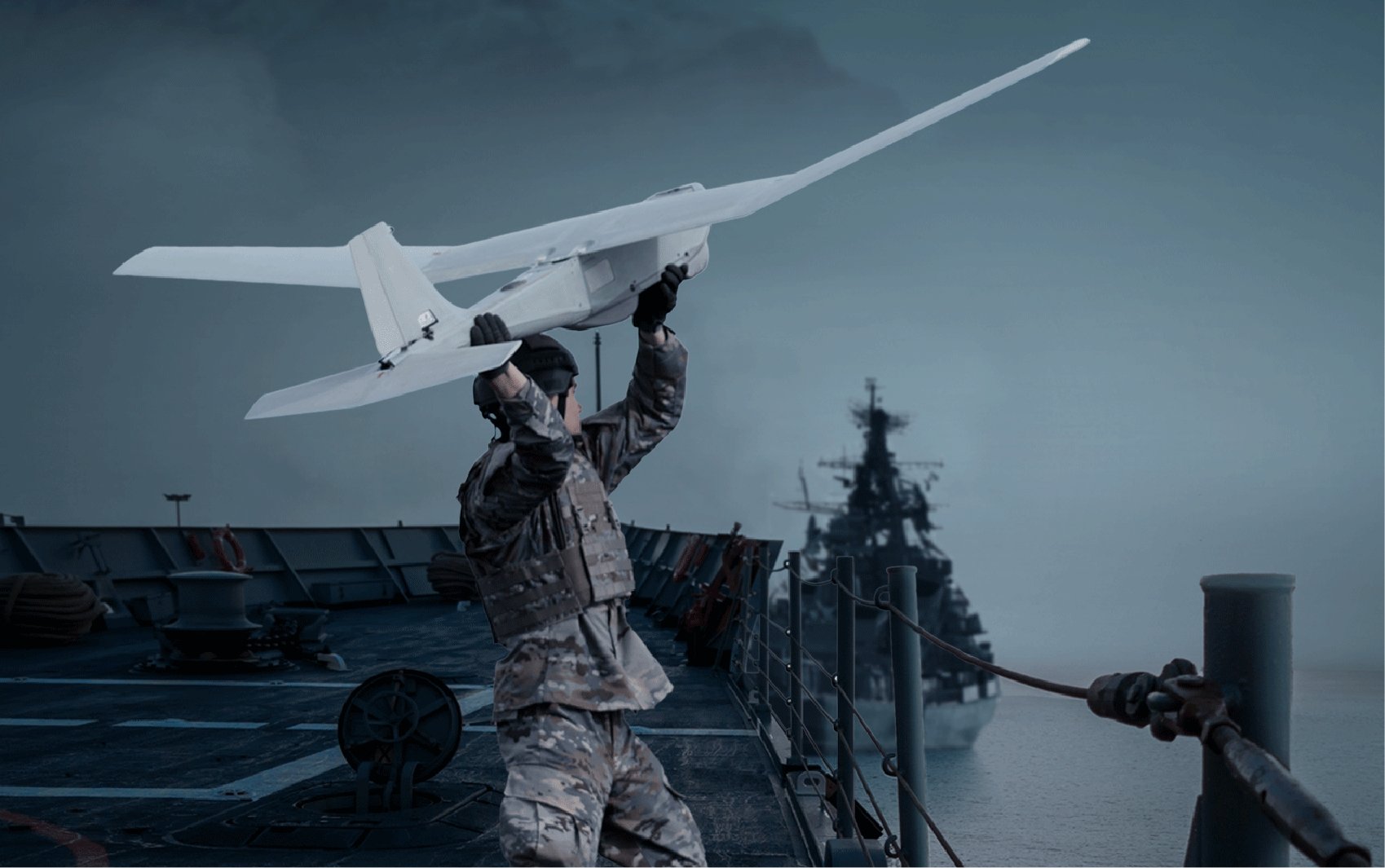Breaking news
Aerovironment successfully demonstrates UAS Puma 3 AE and Switchblade 300 Tactical Missile System.
According to a press release published by Aerovironment on October 18, 2021, the firm announced the successful maritime demonstration of a Puma™ 3 AE small unmanned aircraft system and Switchblade® 300 tactical missile system sensor-to-shooter (S2S) capability as part of NATO REP(MUS) 21, Europe’s maritime unmanned systems operational experimentation exercise, hosted at the Portuguese Navy Centre for Operational Experimentation held in Troia, Portugal in September.
Follow Navy Recognition on Google News at this link
 Puma 3 AE Unmanned Aircraft System (Picture source: Businesswire)
Puma 3 AE Unmanned Aircraft System (Picture source: Businesswire)
The experimentation was part of a United States/United Kingdom Interoperability to Interchangeability (I2I) initiative using unmanned/uncrewed systems.
A key component of the exercise was demonstrating the interoperability of multiple U.S./U.K. control system capabilities to facilitate the transfer through the Puma 3 AE comm relay connection of tactical control and planning tasks of interchangeable, cross-domain assets.
This successful demonstration was the result of combined and coordinated efforts of coalition and industry partnerships including the Naval Information Warfare Center’s C-SCAPE Common Control System (CCS), the Naval Undersea Warfare Center’s CaSHMI system, U.K. Ministry of Defense’s MAPLE command and control system, AeroVironment’s Crysalis™ ground control system (GCS) connected to the varied control systems utilizing a new STANAG 4586 Level 4 interface, unmanned/uncrewed surface vehicles, unmanned underwater vehicles and manned surface ships from additional NATO allies. The U.S. delegation was led by NAVSEA’s Program Executive Office for Unmanned and Small Combatants.
Launched from the USNS Carson City, Puma 3 AE UAS served as an intelligence, surveillance and reconnaissance (ISR) and targeting asset during the S2S exercise. Post launch, control of the Puma 3 AE was transferred to C-SCAPE, which was acting as the CCS on the USNS Carson City for this mission segment.
Using its high-resolution Mantis i45 payload, the Puma 3 AE was used by military operators from the Maritime Operations Center (MOC), located in Troia, to positively identify the moving exercise target of interest. The target location was then digitally transferred from Puma 3 AE to a Switchblade 300 via S2S prior to its launch. The S2S functionality was witnessed by U.S. Navy personnel only.
As a demonstration of interchangeability, Switchblade 300 was then launched from a U.K. unmanned/uncrewed surface vessel (USV), the Maritime Autonomy Demonstrator for Operational eXperimentation (MADFOX), and automatically flew to the fast-moving target using the coordinates provided. Once the target was in the field of view of Switchblade 300’s optical sensors, the Switchblade 300 mission operator confirmed the target and engaged.
During final target approach, Switchblade 300 was waved off just prior to actual engagement of the exercise target to effectively display its patented wave-off capability. Once the exercise was completed, the Puma 3 AE was autonomously recovered back onboard the USNS Carson City via the Precision Recovery System (PRS) demonstrator while the ship remained underway and on course.
Subsequent REP(MUS) 21 demonstrations connected the U.K.’s MAPLE command and control system to an airborne Puma 3 AE, allowing full control of both the aircraft and its i45 payload as MAPLE commanded. Both Puma 3 AE and Switchblade 300 flight operations regularly involved aircraft handoffs between control stations on the USNS Carson City, MADFOX, the Troia beach FOB, and the MOC at Troia base operations.
The AeroVironment Puma 3 AE UAS is designed for land and maritime operations. Capable of landing in water or on land, the all-environment Puma 3 AE and Mantis i45 EO/IR sensor suite empowers operators with extended flight time and a level of imaging capability never before available in the tactical UAS class. The hand-launched Puma 3 AE has a wingspan of 9.2 feet, weighs 15 pounds and can operate for up to 2.5 hours.
The aircraft also has a range of 12.4 miles (20 kilometers) with a standard antenna, and up to 37.2 miles (60 kilometers) with AeroVironment’s Long-Range Tracking Antenna (LRTA). It also features reduced system packaging with a flyable configuration and GCS in one case.




























